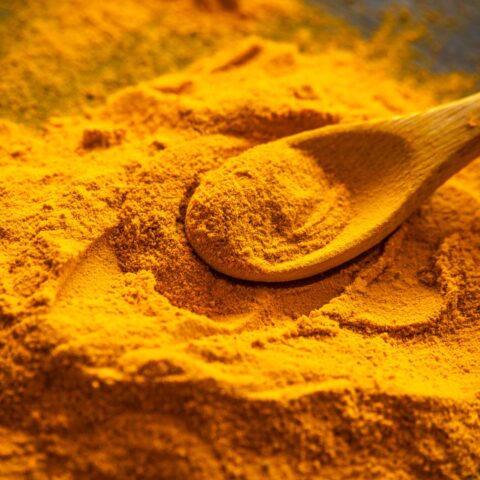What Is Vegetable Oil Made Of?

Vegetable oils were obviously not a component of any pre-agricultural or hunter-gatherer diet, simply because the technology to produce them did not exist. Oils made from walnuts, almonds, olives, sesame seeds, and flaxseeds were first produced using crude presses between 5,000 and 6,000 years ago.
However, except for olive oil, most early use of oils was for non-food purposes such as illumination, lubrication, and medicine. It wasn’t until the beginning of the 20th century with the advent of mechanically driven steel expellers and hexane extraction processes did vegetable oils contribute significantly to the energy intake of the western diet.
Today, vegetable oils used in cooking, salad oils, margarine, shortening, and processed foods supply 17.6% of the total daily energy intake in the U.S. diet. The enormous infusion of vegetable oils into the western diet starting in the early 1900s represents the greatest single factor responsible for elevating the dietary omega-6-to-omega-3 ratio to its current and unhealthful value of 10. In hunter-gatherer diets, the omega-6/omega-3 ratio was closer to 2.
Should You Eliminate Vegetable Oils from Your Diet?
So if this is the case, then why should you not eliminate all vegetable oils from your diet? Simply stated, there are at least six oils (flaxseed, walnut, olive, macadamia, coconut, and avocado) that can promote health and facilitate getting the correct balance of good fats in your diet.
Because hunter-gatherers ate the entire carcass of wild animals (tongue, eyes, brains, marrow, liver, gonads, intestines, kidneys, etc.) and relished fatty plant foods (nuts and seeds), they did not have to worry about the correct balance of fatty acids in their diet. It came out correctly in the wash.
For most of us, the thought of eating organs is not only repulsive, but is also not practical as we simply do not have access to wild game. Consequently, by eating grass produced or free ranging meats, fish, and seafood along with healthful oils, nuts, and seeds, you can get the correct balance of fatty acids in your diet.
As you can see from the tables listed below, only three vegetable oils have omega-6/omega-3 ratios of less than 3. These are flaxseed oil (0.24), canola (2.2) and mustard seed (2.6). Although Dr. Cordain originally recommended mustard seed oil in the first edition of The Paleo Diet, he no longer makes this recommendation because of its high erucic acid (22:1) concentration of 41.2 %. High dietary intake of erucic acid in laboratory animals has been shown to cause deleterious changes in heart structure and function. Human studies in India show that mustard seed oil consumption counters the heart-healthy effects of its high concentration of omega-3 fatty acids.
Hence, this leaves only two vegetable oils (canola and flaxseed) that do not contribute to an elevated intake of omega-6 fatty acids. Recently, a number of epidemiologic studies have shown a higher risk for prostate cancer with increased consumption of alpha linolenic acid (ALA), a major component of both canola and flaxseed oil.
In contrast, the consumption of longer chain omega-3 fatty acids (EPA + DHA) found in fish and fish oil capsules actually decreases the risk for prostate cancer. Further, not all studies have demonstrated a statistical link between ALA and prostate cancer.
In support of this notion, are animal experiments showing that whole flaxseed actually inhibits the growth and development of prostate cancer?
The case against flaxseed oil as a promoter of prostate cancer is currently based solely upon epidemiologic evidence and therefore remains inconclusive because of the total lack of confirming experimental evidence. Because the majority of epidemiological studies support the notion that ALA is protective against cardiovascular disease, flaxseed oil should still be viewed as healthful.
Both olive oil and avocado oil are high (73.9 and 70.6 % respectively) in cholesterol-lowering monounsaturated fatty acids, but have less than favorable omega-6/omega-3 ratios of 11.7 and 13.5. Consequently, excessive consumption of both of these oils without adequate intake of long chain omega-3 fatty acids (EPA + DHA) will derail an otherwise healthy diet. We recommend that you get 0.5-1.8 grams of EPA + DHA per day in your diet from either fish or fish oil capsules.
RELATED: Can Omega-3 Fatty Acids Help with Obesity and Metabolic Disorders?
Why Canola Oil Is No Longer Recommended
Since the original publication of The Paleo Diet in 2002, I have now come full circle in my view of canola oil and can no longer support its consumption or use. Let me explain why. Canola oil comes from the seeds of the rape plant (Brassica rapa or Brassica campestris) which is a close relative of broccoli, cabbage, Brussels sprouts and kale. Clearly, humans have eaten cabbage and its relatives since prior to historical times, and I still strongly support consumption of these health promoting vegetables. However, the concentrated oil from the seeds of Brassica plants is another story.
In its original form, rape plants produced a seed oil that contained high concentrations (20-50%) of erucic acid (a monounsaturated fatty acid labeled, 22:1n9) which I have previously explained is toxic and which causes a wide variety of pathological changes in laboratory animals. In the early 1970’s plant breeders from Canada developed a strain of rape plant that produced a seed with less than 2% erucic acid (Canada, oil, low-acid = the name canola oil).
The erucic acid content of commercially available canola oil averages 0.6%. Despite its low erucic acid content, a number of experiments in the 1970s showed that even at low concentrations (2.0 % and 0.88 %) canola oil fed to rats could still elicit minor heart scarring that was considered “pathological.” A series of recent rat studies of low erucic canola oil conducted by Dr. Ohara and colleagues at the Hatano Research Institute in Japan reported kidney injuries, and increases in blood sodium levels and abnormal changes to a hormone (aldosterone) that regulates blood pressure. Other negative effects of canola oil consumption in animals at 10% of calories include decreased litter sizes, behavioral changes and liver injury.
A number of more recent human studies of canola/rapeseed oil by Dr. Poikonen and colleagues at the University of Tampere in Finland has shown it to be a potent allergen in adults and children and may cause allergic cross reactions from other environmental allergens in children with atopic dermatitis (skin rashes). Based upon these up-to-date studies in both humans and animals, I prefer to err on the “safe side,” and can no longer recommend canola oil.
In the below tables we list the fatty acid content of most commercially available vegetable oils. You can use these tables to help make an informed decision in choosing your vegetable oil based upon its fatty acid composition. If you are unfamiliar with fatty acid nomenclature and how the different types of fatty acids impact your health please refer to our fatty acid primer.
Table of Vegetable Oils: Linoleic Acid & Caproic Acid
*Units: grams fatty acids per 100 grams oil
| Fatty Acids | Almond | Apricot Kernel | Avocado | Canola | Coconut | Corn | Cotton- seed | Flaxseed | |
| Caprylic Acid | 6:00 | 0.6 | |||||||
| Caprylic Acid | 8:00 | 7.5 | |||||||
| Capric Acid | 10:00 | 6 | |||||||
| Lauric Acid | 12:00 | 44.6 | |||||||
| Myristic Acid | 14:00 | 16.8 | 0.24 | 0.8 | |||||
| Palmitic Acid | 16:00 | 6.5 | 5.8 | 10.9 | 4 | 8.2 | 10.58 | 22.7 | 5.3 |
| Margaric Acid | 17:00 | 0.07 | |||||||
| Stearic Acid | 18:00 | 1.7 | 0.5 | 0.66 | 1.8 | 2.8 | 1.85 | 2.3 | 4.1 |
| Arachidic Acid | 20:00 | 0.7 | 0.43 | ||||||
| Behenic Acid | 22:00 | 0.4 | |||||||
| Lignoceric Acid | 24:00:00 | 0.2 | |||||||
| Total | 8.2 | 6.3 | 11.56 | 7.1 | 86.5 | 13.17 | 25.8 | 9.4 | |
| Mono-unsaturated | |||||||||
| Palmitoleic Acid | 16:01 | 0.6 | 1.5 | 2.67 | 0.2 | 0.14 | 0.8 | ||
| 17:01 | |||||||||
| Oleic Acid | 18.1 | 69.4 | 58.5 | 67.89 | 56.1 | 5.8 | 27.33 | 17 | 20.2 |
| Gadoleic Acid | 20:01 | 1.7 | |||||||
| Erucic Acid | 22:01 | 0.6 | |||||||
| Total | 70 | 60 | 70.56 | 58.6 | 5.8 | 27.47 | 17.8 | 20.2 | |
| Poly-unsaturated | |||||||||
| Omega 6 | |||||||||
| Linoleic Acid | 18:2n6 | 17.4 | 29.3 | 12.53 | 20.3 | 1.8 | 53.52 | 51.5 | 12.7 |
| Arachidonic Acid | 20:4n6 | 0.1 | |||||||
| Total n6 | 17.4 | 29.3 | 12.53 | 20.3 | 1.8 | 53.52 | 51.6 | 12.7 | |
| Omega 3 | |||||||||
| Alpha Linolenic Acid (ALA) | 18:3n3 | 0.96 | 9.3 | 1.16 | 0.2 | 53.3 | |||
| Total n3 | 0 | 0 | 0.96 | 9.3 | 0 | 1.16 | 0.2 | 53.3 | |
| Total Poly | 17.4 | 29.3 | 13.49 | 29.6 | 1.8 | 54.68 | 51.8 | 66 | |
| Ratio n6/n3 | No n3 | No n3 | 13.1 | 2.2 | No n3 | 46.1 | 258 | 0.24 | |
| Fatty Acids | Grape-seed | Hazelnut | Mustard | Oat | Olive | Palm | Peanut | Rice Bran | |
| Common Name | Saturated | ||||||||
| Caproic Acid | 6:00 | ||||||||
| Caprylic Acid | 8:00 | ||||||||
| Capric Acid | 10:00 | ||||||||
| Lauric Acid | 12:00 | 0.39 | 0.1 | ||||||
| Myristic Acid | 14:00 | 0.1 | 0.1 | 1.39 | 0.24 | 1 | 0.1 | 0.7 | |
| Palmitic Acid | 16:00 | 6.7 | 5.2 | 3.75 | 16.67 | 10.93 | 43.5 | 9.5 | 16.9 |
| Margaric Acid | 17:00 | ||||||||
| Stearic Acid | 18:00 | 2.7 | 2 | 1.12 | 1.05 | 1.98 | 4.3 | 2.2 | 1.6 |
| Arachidic Acid | 20:00 | 0.42 | 1.4 | ||||||
| Behenic Acid | 22:00 | 0.13 | 2.8 | ||||||
| Lignoceric Acid | 24:00:00 | 0.9 | |||||||
| Total | 9.5 | 7.3 | 6.26 | 18.35 | 13.46 | 48.9 | 16.9 | 19.2 | |
| Mono-unsaturated | |||||||||
| Palmitoleic Acid | 16:01 | 0.3 | 0.2 | 0.22 | 0.2 | 1.16 | 0.3 | 0.1 | 0.2 |
| 17:01 | 0.14 | ||||||||
| Oleic Acid | 18.1 | 15.8 | 77.8 | 11.61 | 34.9 | 72.29 | 36.6 | 44.8 | 39.1 |
| Gadoleic Acid | 20:01 | 6.19 | 0.31 | 0.1 | 1.3 | ||||
| Erucic Acid | 22:01 | 41.18 | |||||||
| Total | 16.1 | 78 | 59.2 | 35.1 | 73.9 | 37 | 46.2 | 39.3 | |
| Poly-unsaturated | |||||||||
| Omega 6 | |||||||||
| Linoleic Acid | 18:2n6 | 69.6 | 10.1 | 15.33 | 39.08 | 9.21 | 9.1 | 32 | 33.4 |
| Arachidonic Acid | 20:4n6 | ||||||||
| Total n6 | 69.6 | 10.1 | 15.33 | 39.08 | 9.21 | 9.1 | 32 | 33.4 | |
| Omega 3 | |||||||||
| Alpha Linolenic Acid (ALA) | 18:3n3 | 0.1 | 5.9 | 1.79 | 0.79 | 0.2 | 1.6 | ||
| Total n3 | 0.1 | 0 | 5.9 | 1.79 | 0.79 | 0.2 | 0 | 1.6 | |
| Total Poly | 69.7 | 10.1 | 21.23 | 40.87 | 10 | 9.3 | 32 | 35 | |
| Ratio n6/n3 | 696 | No n3 | 2.6 | 21.8 | 11.7 | 45.5 | No n3 | 20.9 | |
| Fatty Acids | Safflower | Sesame | Soybean | Sunflower | Walnut | Wheat Germ | |
| Common Name | Saturated | ||||||
| Caproic Acid | 6:00 | ||||||
| Caprylic Acid | 8:00 | ||||||
| Capric Acid | 10:00 | ||||||
| Lauric Acid | 12:00 | ||||||
| Myristic Acid | 14:00 | 0.1 | 0.1 | ||||
| Palmitic Acid | 16:00 | 4.29 | 8.9 | 10.3 | 5.9 | 7 | 16.6 |
| Margaric Acid | 17:00 | ||||||
| Stearic Acid | 18:00 | 1.92 | 4.8 | 3.8 | 4.5 | 2 | 0.5 |
| Arachidic Acid | 20:00 | ||||||
| Behenic Acid | 22:00 | ||||||
| Lignoceric Acid | 24:00:00 | ||||||
| Total | 6.21 | 13.7 | 14.2 | 10.4 | 9 | 17.2 | |
| Mono-unsaturated | |||||||
| Palmitoleic Acid | 16:01 | 0.2 | |||||
| 17:01 | |||||||
| Oleic Acid | 18.1 | 14.36 | 39.3 | 22.8 | 19.5 | 22.2 | 14.6 |
| Gadoleic Acid | 20:01 | 0.2 | 0.2 | 0.4 | |||
| Erucic Acid | 22:01 | ||||||
| Total | 14.36 | 39.7 | 23.2 | 19.5 | 22.7 | 15.1 | |
| Poly-unsaturated | |||||||
| Omega 6 | |||||||
| Linoleic Acid | 18:2n6 | 74.6 | 41.3 | 51 | 65.7 | 52.9 | 54.8 |
| Arachidonic Acid | 20:4n6 | ||||||
| Total n6 | 74.6 | 41.3 | 51 | 65.7 | 52.9 | 54.8 | |
| Omega 3 | |||||||
| Alpha Linolenic Acid (ALA) | 18:3n3 | 0.3 | 6.8 | 10.4 | 6.9 | ||
| Total n3 | 0 | 0.3 | 6.8 | 0 | 10.4 | 6.9 | |
| Total Poly | 74.6 | 41.6 | 57.8 | 65.7 | 63.3 | 61.7 | |
| Ratio n6/n3 | No n3 | 137.7 | 7.5 | No n3 | 5.1 | 7.9 | |
Loren Cordain, Ph.D.
As a professor at Colorado State University, Dr. Loren Cordain developed The Paleo Diet® through decades of research and collaboration with fellow scientists around the world.
More About The Author



